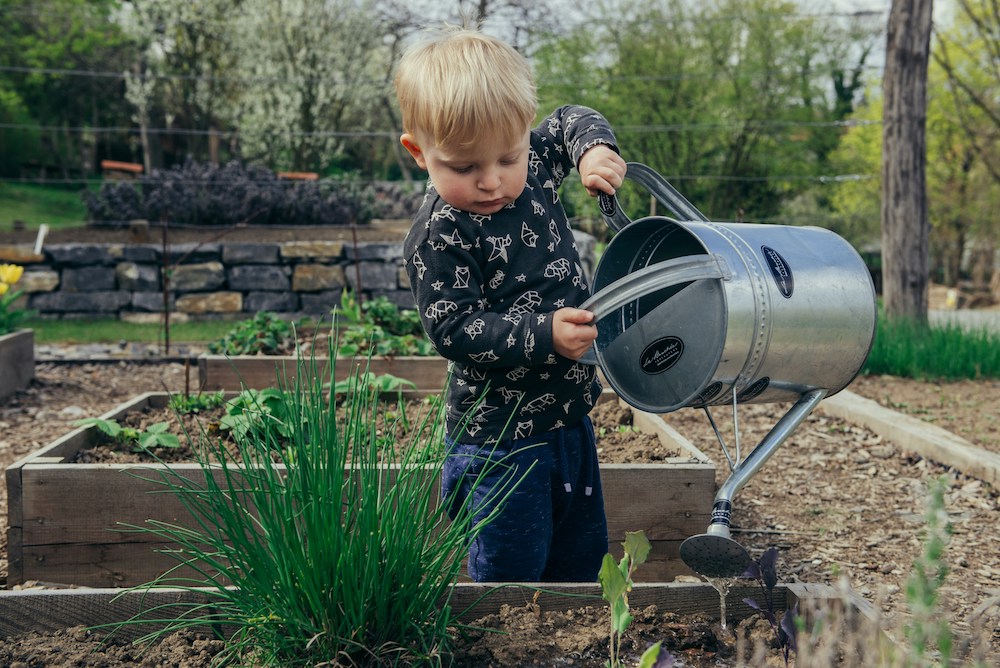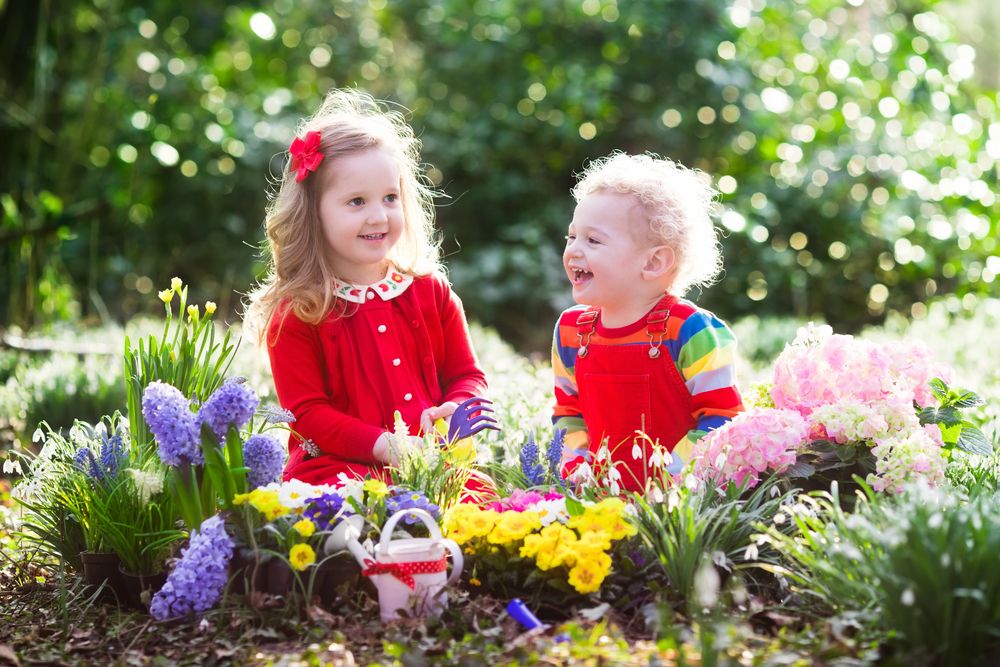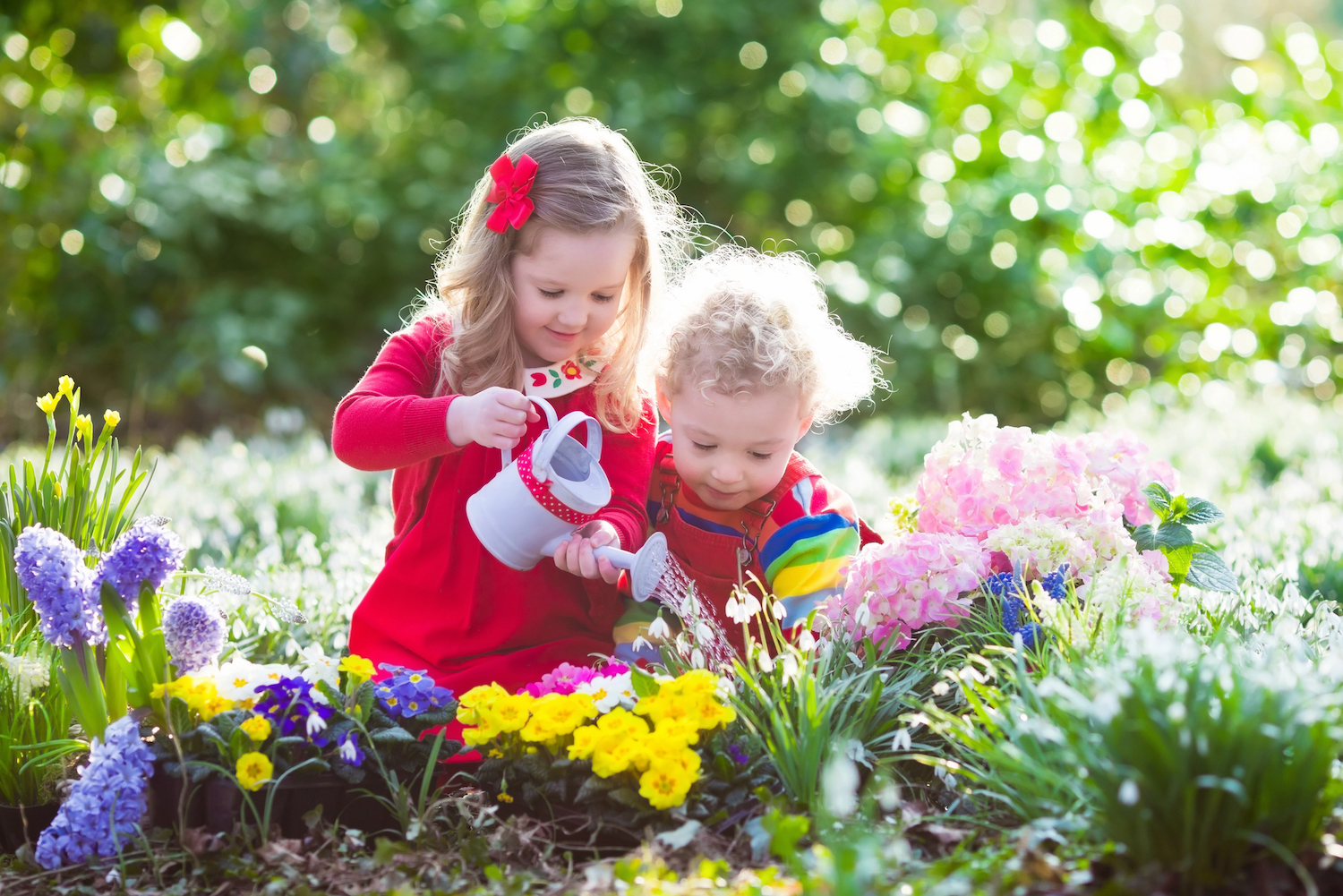There are many benefits tied to turning gardening into a family activity.

For example, it means that:
- You are helping your children find a hobby that they genuinely enjoy
- You can spend more quality time together as a family
- You can encourage them to spend more time outdoors, reducing the amount of time they spend in front of a screen
- You can experience the physical and mental benefits of gardening
- You can enhance your home’s outdoor space and add to its overall value
- You can explore the possibilities of growing your own fruit and veg
As such, it is hardly surprising that 71.5 million households (or families) in the US garden on a regular basis. Ready to get your hands dirty and join in on the fun? Check out our top tips for gardening with children!
Make some tasks parents-only.
While your children may want to be as involved in the gardening journey as possible, you should always operate with a safety-first mindset. This means that you need to make it clear ahead of time which tasks should (and will) be left to the grown-ups. For example, this could include removing old tree trunks or branches, especially when it requires you to use tools such as a chainsaw.
Buy child-friendly gardening tools.
If your child is getting involved in transforming your garden, you should make it as easy as possible for them to do so. This can be achieved by purchasing child-friendly gardening accessories, such as hand trowels and gardening gloves. This way, they can remain an active participant while also feeling a little more adult as they have their own set of tools to use!

Focus on plants/flowers that grow quickly.
While gardening can be a great way to show your children the value of patience (especially as some flowers take longer to blossom than others), this delayed sense of gratification can be frustrating. This is because, for the most part, children are used to seeing immediate results, which could make them lose interest in your new family hobby. You can turn that around somewhat by making sure that you’re planting flowers or plants that grow quickly. This will help to ensure their enthusiasm levels remain as high as possible moving forward.
If you’re contending with a busy schedule, you may also find it useful to focus on plants/flowers and greenery that is relatively low-maintenance. This means that you do not have to spend hours each week on your garden (unless, of course, you really want to). It also means that the majority of the gardening tasks on your to-do list are not too complex for your children to get involved with or in.
Remember that your garden doesn’t need to look perfect.
While you may initially have envisioned building a garden that looks well-manicured and picture-perfect, it is important to understand that this is unrealistic for the majority of homeowners. This is because this kind of aesthetic requires near-constant work and care, often from trained professionals. Not only that, but gardens that tend to look a little “messier” tend to be a lot more welcoming and vibrant.
As such, you should focus on creating an outdoor space that works for your family. For example, instead of uniformal rows of flowers divided by color, you could create a space that is much more vibrant and chaotic (in a good way). You could also include child-friendly spaces, such as a miniature fairy garden that your children will love to explore.
Create an outdoor space that attracts wildlife.
Creating an outdoor space that attracts wildlife, such as buzzing bees, is a great way to ensure that your garden continues to thrive. It also means that you can use this as an opportunity to teach your child more about local wildlife. Fortunately, there are many ways in which you can achieve this goal, such as by planting colorful and fragrant flora and fauna, and herbs that provide bees with nectar.
You could further this learning opportunity by asking your children to draw pictures of the insects or wildlife they see, before researching them together a little later on.
Assign your child a weekly task.
Assigning your child a weekly gardening task, such as watering flowers or raking up leaves, will not only ensure that your garden is in great condition, but it also means that you can encourage them to be a little more responsible as they get older. Of course, you should set a good example by doing your own tasks, too.
Celebrate your victories.
You can ensure that your children remain as engaged as possible in your garden adventure by celebrating your victories, no matter how small they may be. For example, you may want to celebrate a flower that has just begun to blossom, or spend time baking using some of the ingredients used within your garden. Either way, you should let your child know that you are proud of them and the work they put into gardening. This means that they are much more likely to continue gardening moving forward. Who knows, this could even turn into a lifelong hobby for them.
Final thoughts.
Gardening is a hobby that the entire family gets involved with – and one for which the benefits are pretty much never-ending. From improved mental health to adding value to your home, you’ll quickly see the benefits of working on your garden. Not only that, but it provides you with the opportunity to spend some much-needed quality time with your children.
Fortunately, there are plenty of steps that you can take to make the process of gardening with your little ones as easy and stress-free as possible, such as by making sure you take care of the difficult tasks independently and by celebrating their every victory along the way. If you’re first starting out, the advice outlined above will help you transform your outdoor space in no time at all.
Do you garden with your children? Share some tips and tricks below!









